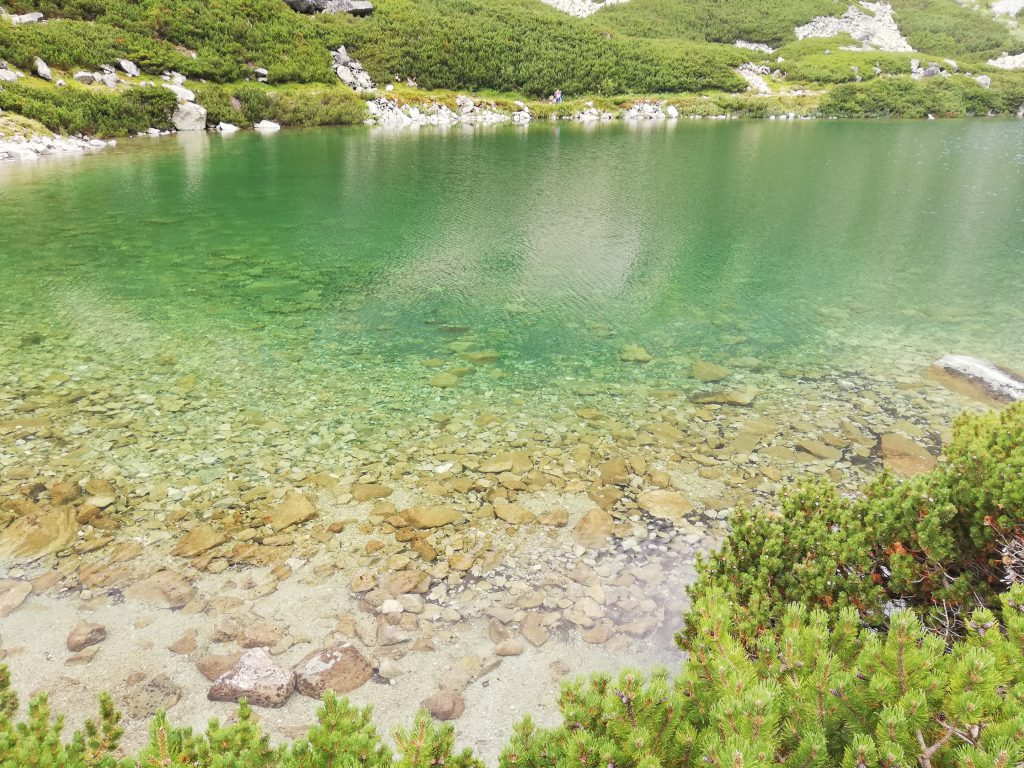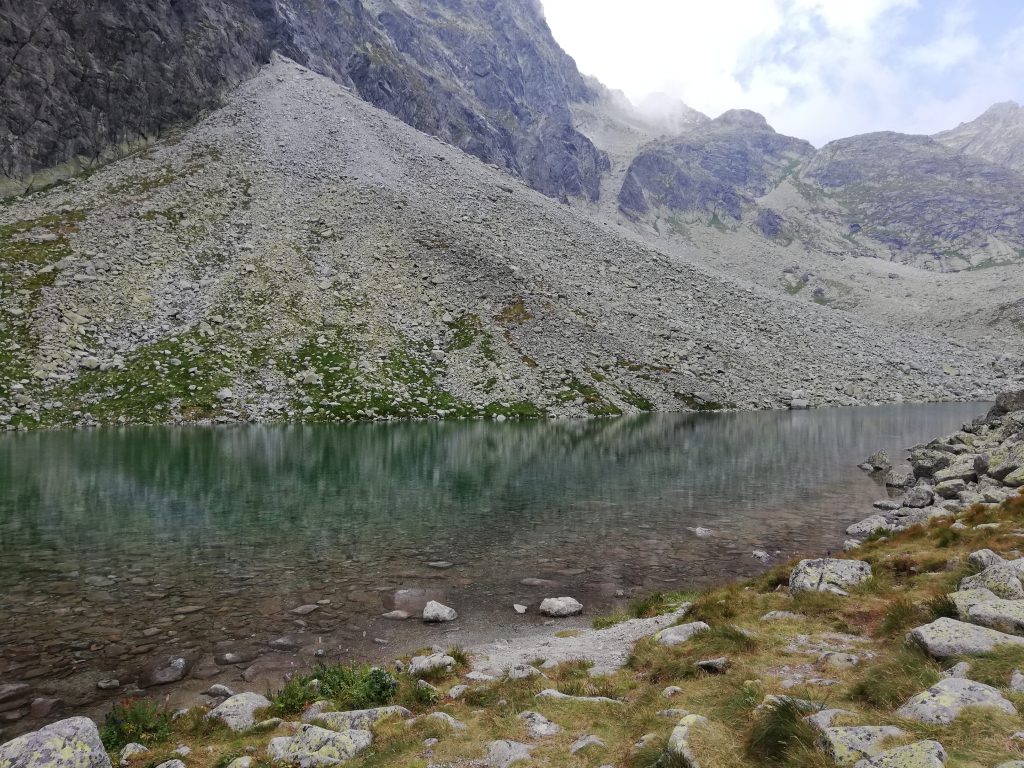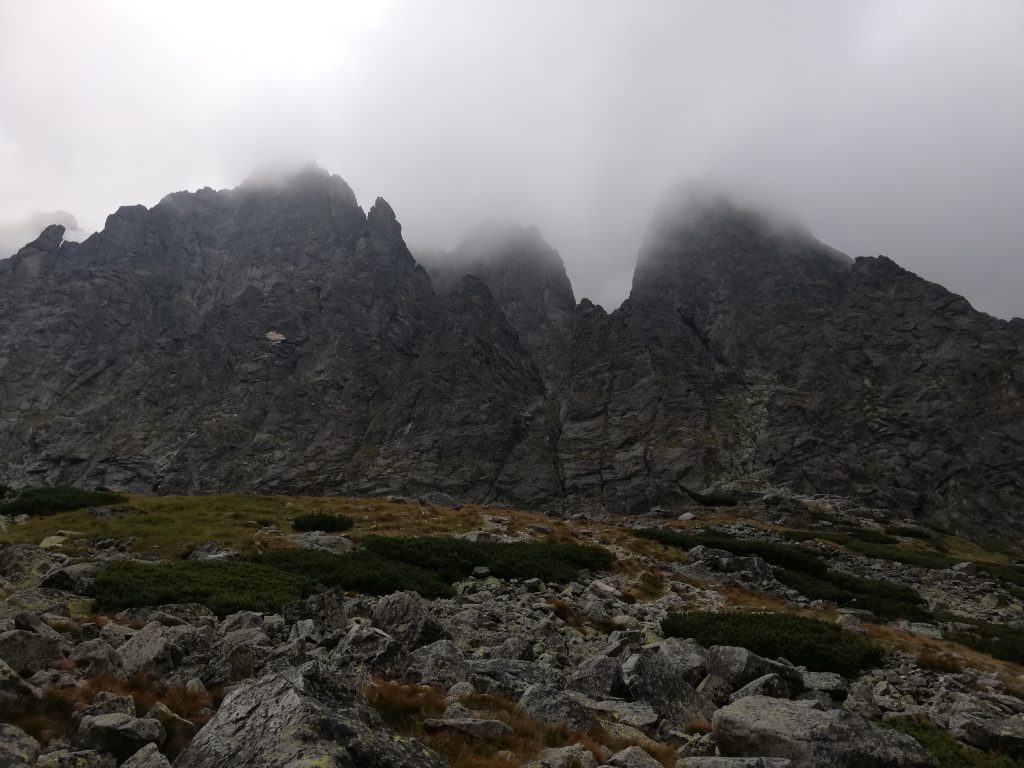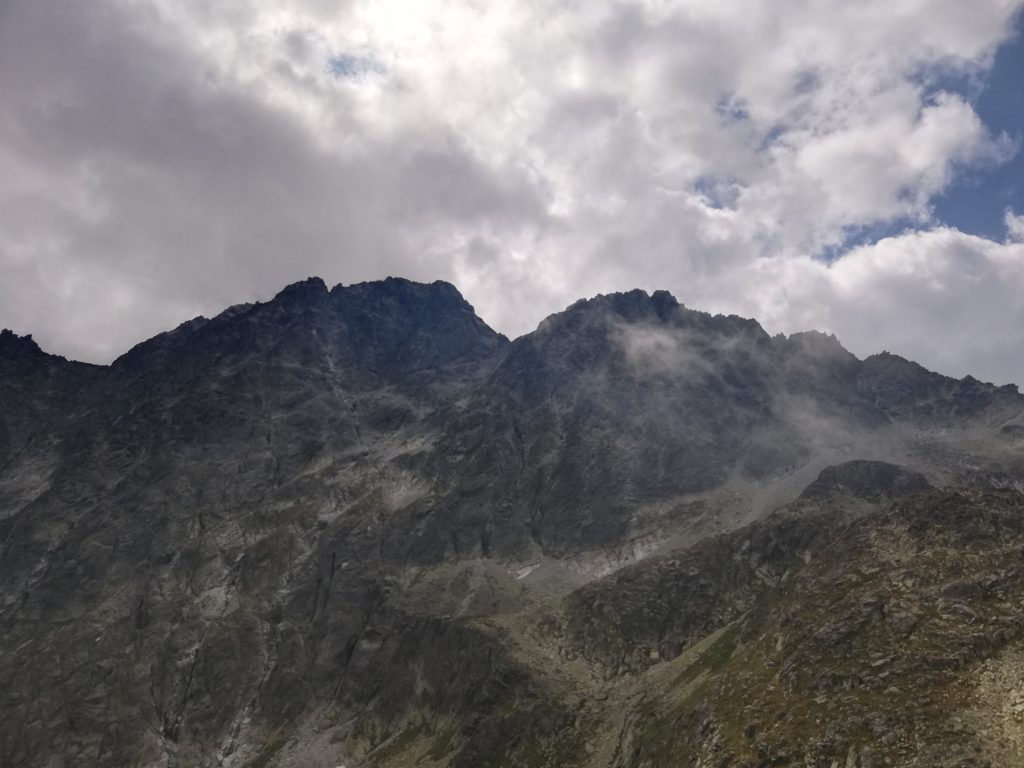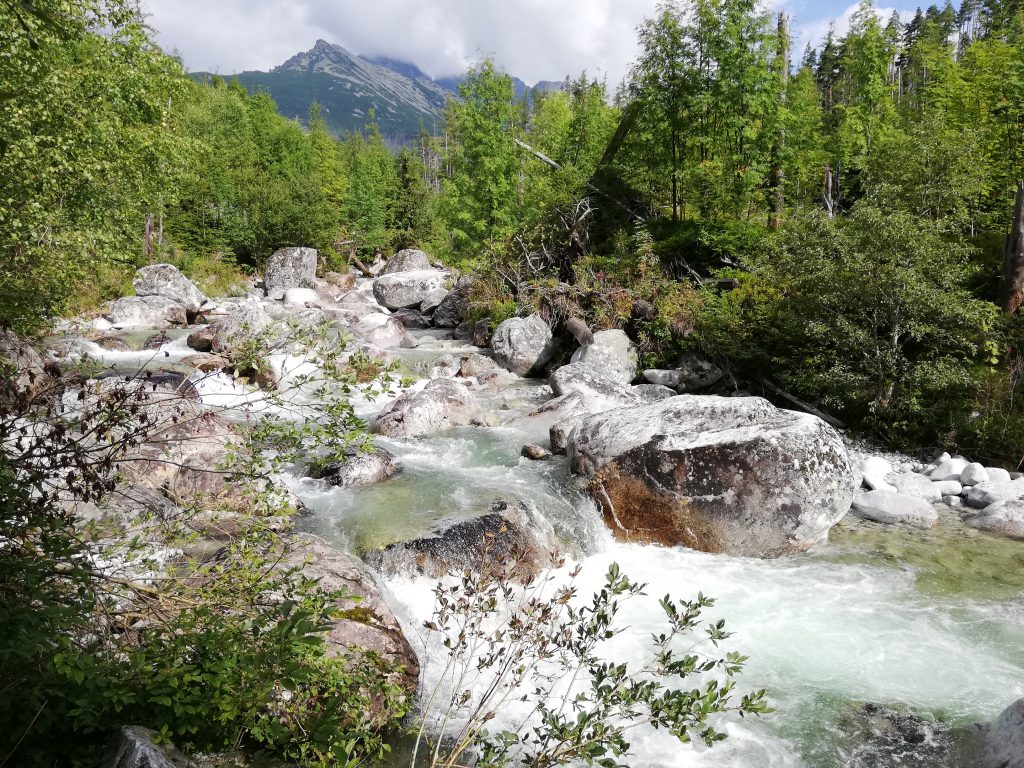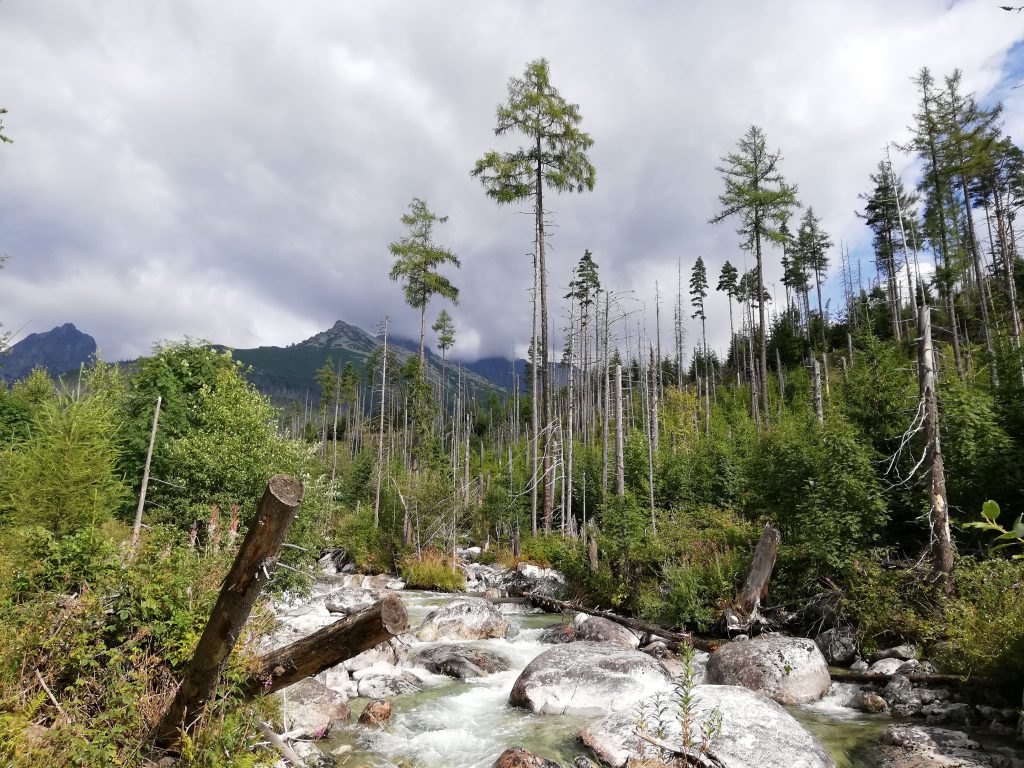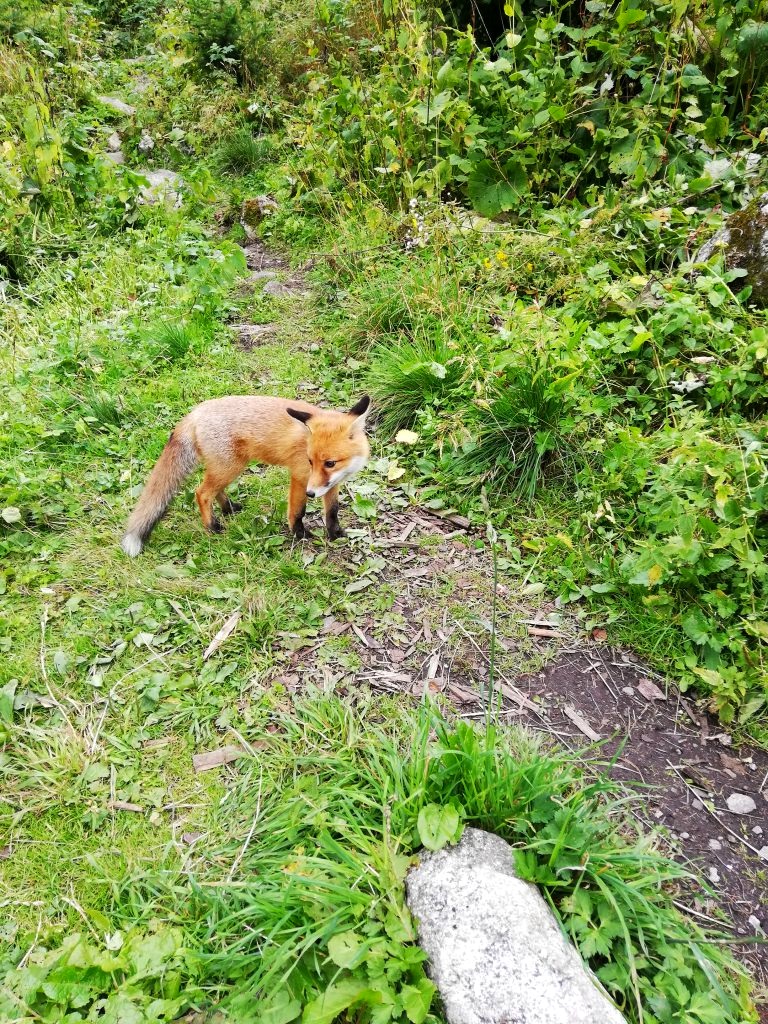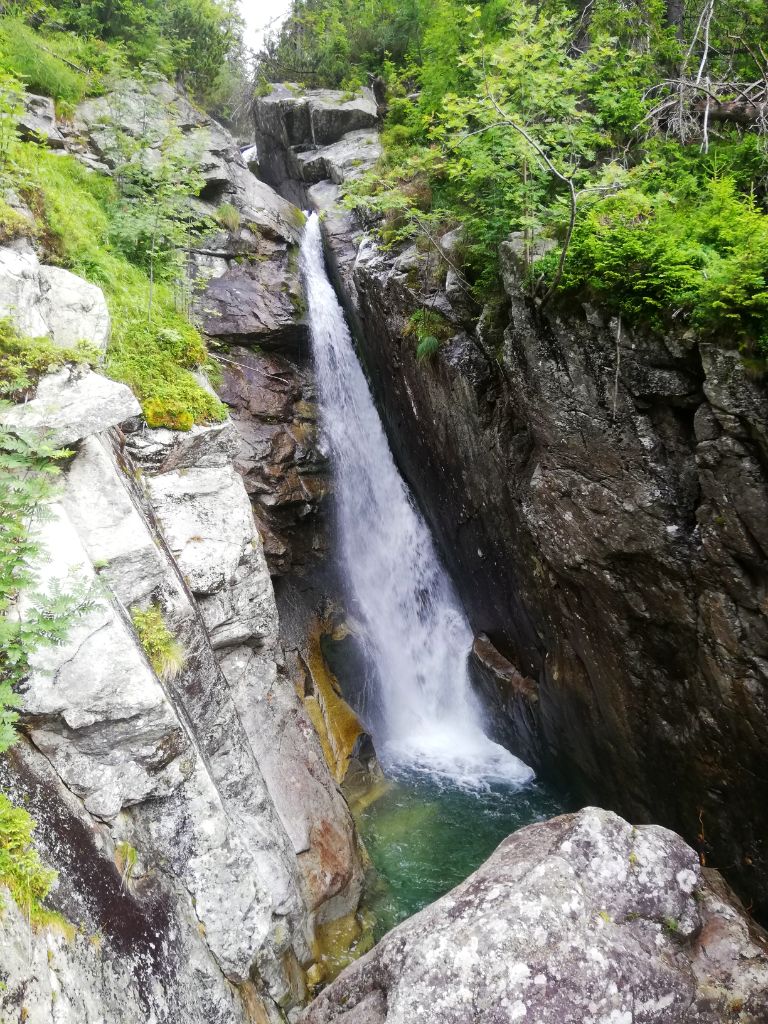Note
The following text is a follow-up of this blog-post.
Východná Vysoká, August 15
I set off at the green marked trailhead at the train station in Tatranská Polianka (1005 meters AMSL, i.e. Above Mean Sea Level; every height stated below is AMSL), a village with about two hundred inhabitants located three kilometers west of Starý Smokovec.
Excluding breaks, it took me four hours to ascend Východná Vysoká (2429 meters, not to be confused with Vysoká3 which is a different mountain in the High Tatras) and to enjoy a breathtaking view from the “Eastern Peak”.
Velická dolina, which you have to cross for the ascent (you enter it after around one and a half hours), is one of the most visited and easiest accessible valleys in the High Tatras mountain range.
At the valley entrance in the proximity of the Sliezsky Dom Hotel (“Silesian House”, the hotel is situated next to the Velické pleso mountain lake on 1670 meters, where the hiker also comes upon the junction to the Tatramagistrale or Tatranská Magistrála) there exist several unmarked paths to Gerlachovský štít, the highest mountain (2654 meters) in the High Tatras and in the entire Carpathian mountain range4 .
After leaving behind the Sliezsky Dom Hotel you proceed through an exceptionally intriguing part of the trail, called Kvetnica (kvet is the Slovak word for flower).
More exactly, it is the part between the mountain lakes Velické and Dlhé pleso (1939 meters), where you pass the Velický vodopád cascade and the Večný dážď (“Eternal rain”) stone formations5 . For me a new and delightful sight to behold.
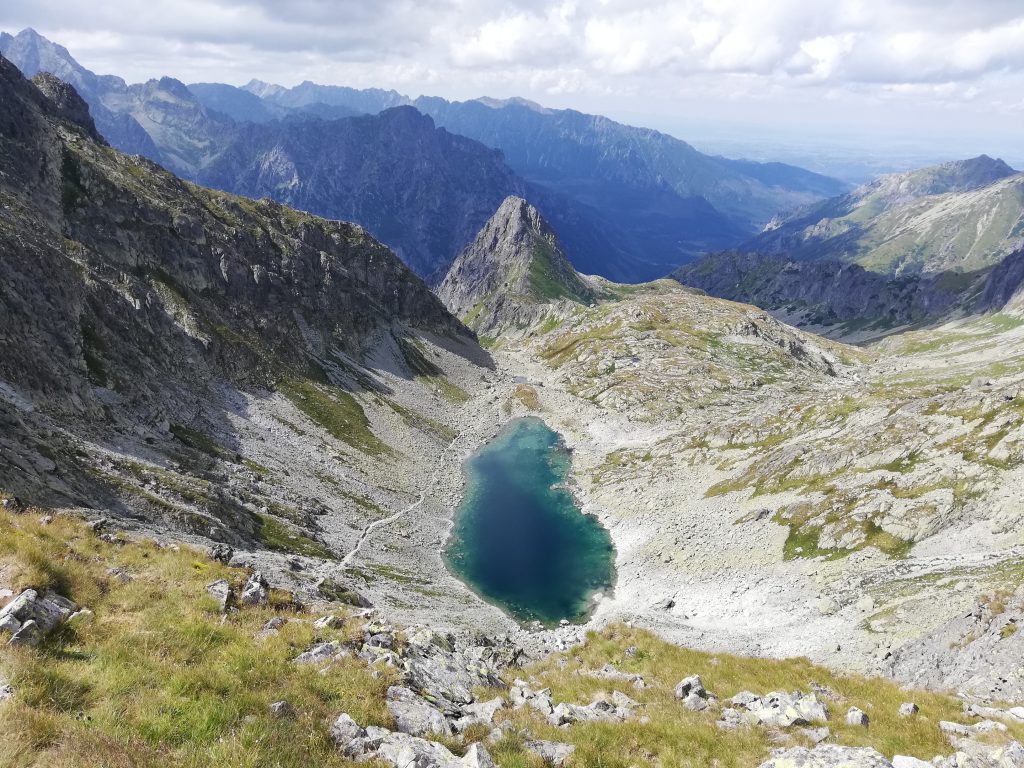
Beginning from sedlo Poľský hrebeň (“Polish mountain crest”, 2200 meters), you have to negotiate the strenuous and steep remainder of the ascent to Východná Vysoká, the mossy granite boulders loose lying all over the place making it quite difficult and time-consuming to push forward.

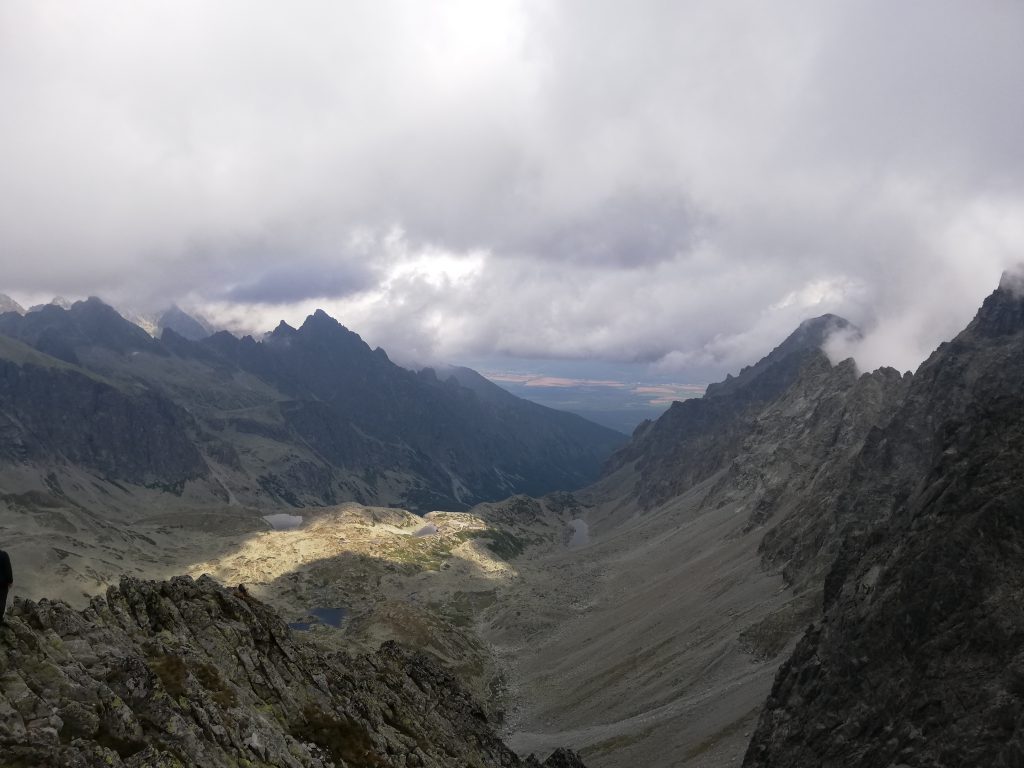
After a short break on the peak I descended on the same way I had been climbing up (the green marked path), but from Velická poľana on I followed the yellow marks to the train station in Nový Smokovec.
Obrovský vodopád, August 16
After three tiring days of hiking I decided to do a comparatively short tour to some of the big cascades in the vicinity of the Hrebienok spa (“Little ridge”, 1285 meters).
Starting point was the train station in Tatranská Lesná two kilometers westwards of Tatranská Lomnica, finishing point was again Starý Smokovec.
The trail I had chosen is popular, easily accessible, and not very challenging to hike (at first yellow, later green marked path). The first section of the way leads you alongside Studený potok (“Cold stream”).

The bridges and view points at the cascades are fairly crowded throughout the high season, so you should expect waiting a couple of minutes before catching a good spot for a photo.
You must not miss the Rainerova chata close to the Obrovský vodopád (voda: water, pád: fall) cascade, a refuge (or cabin, more precisely) built in 1863 and named after his builder Johann Georg Rainer. It is the oldest structure of its kind in the High Tatras mountain range.
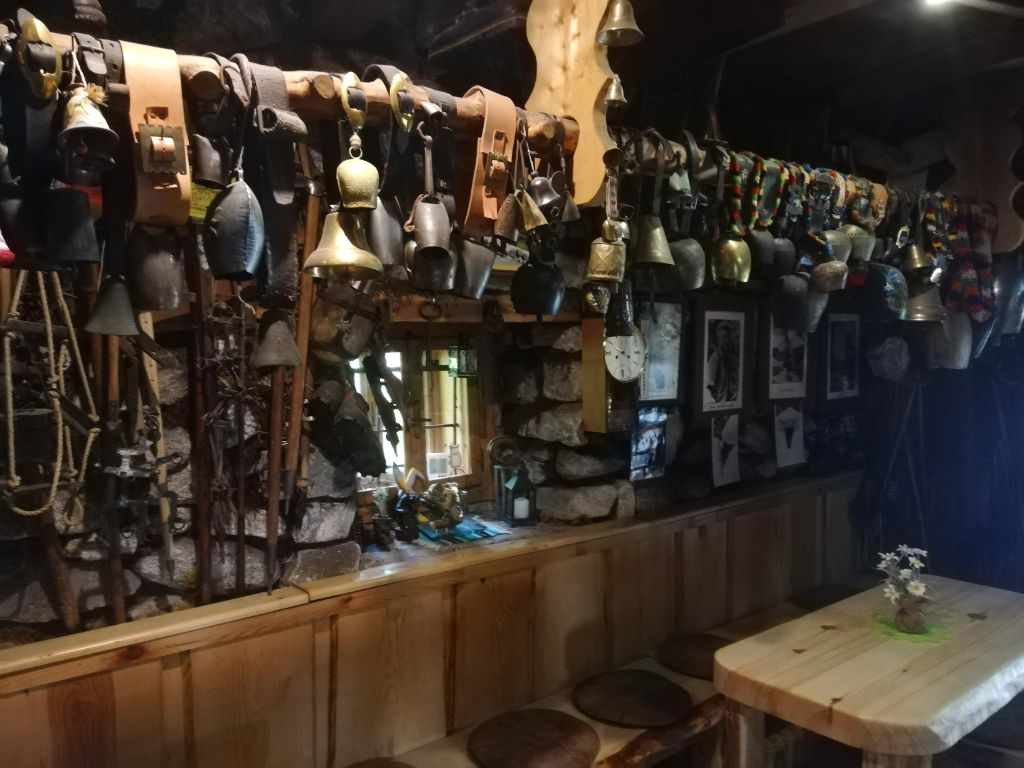
Apart from buying snacks and beverages you can take a look at an exposition of antique mountaineering and skiing equipment and dry your attire at the fireplace inside this small but cosy cabin (there exist no sleeping spaces like in high-altitude refuges).
3 vysoká (f) is an adjective actually and means “tall” or “high”; see footnote 1
4 steering for the summit is not permitted for a general visitor unless being part of a guided tour led by a certified mountain guide
5 these stone formations are an interesting rock climbing spot with in places higher degrees of difficulty
Featured image: Batizovské pleso
